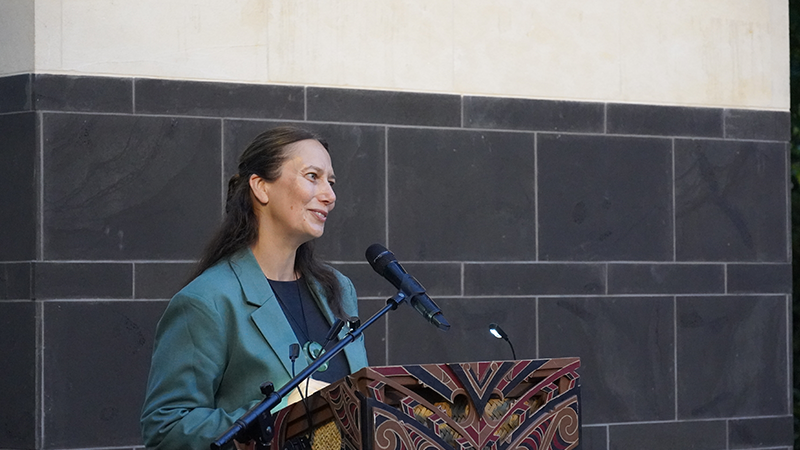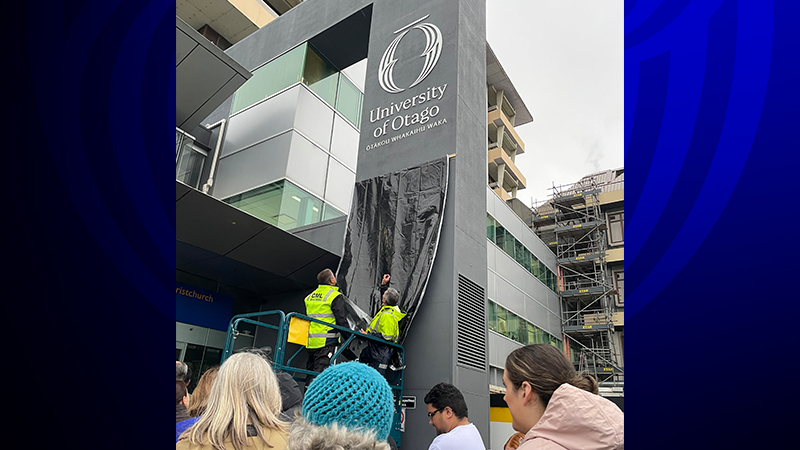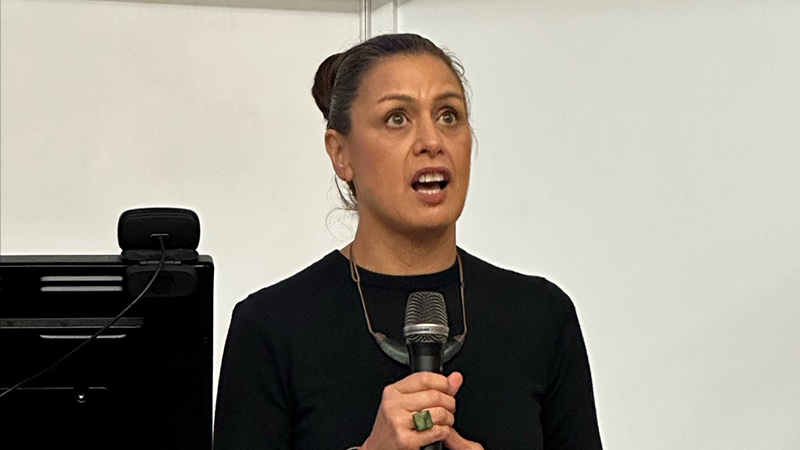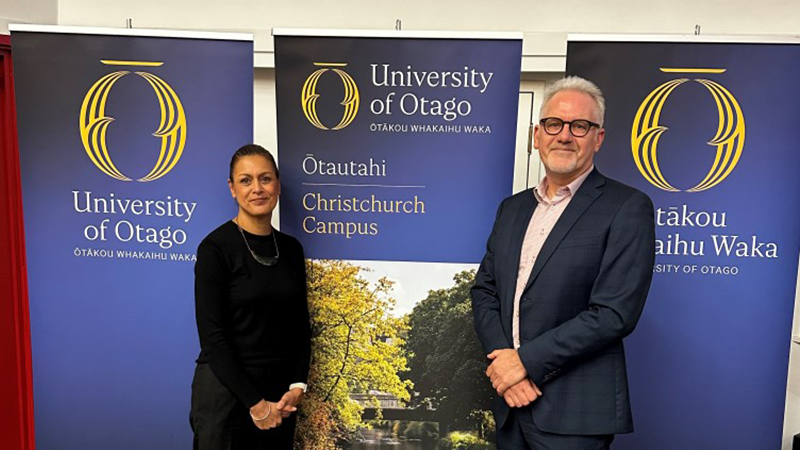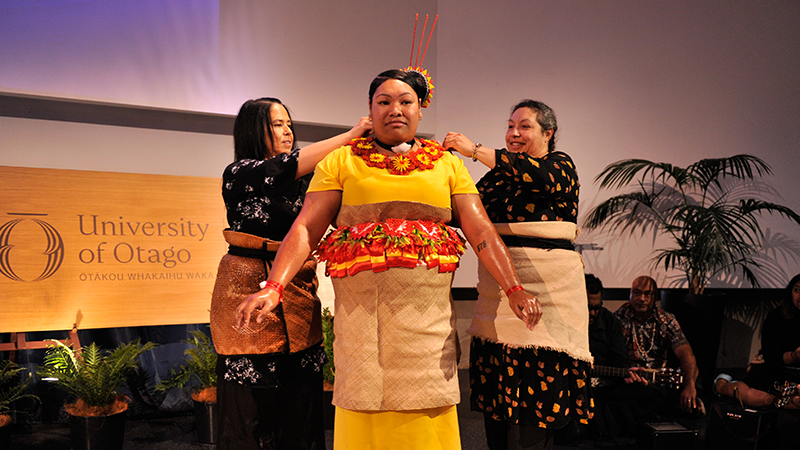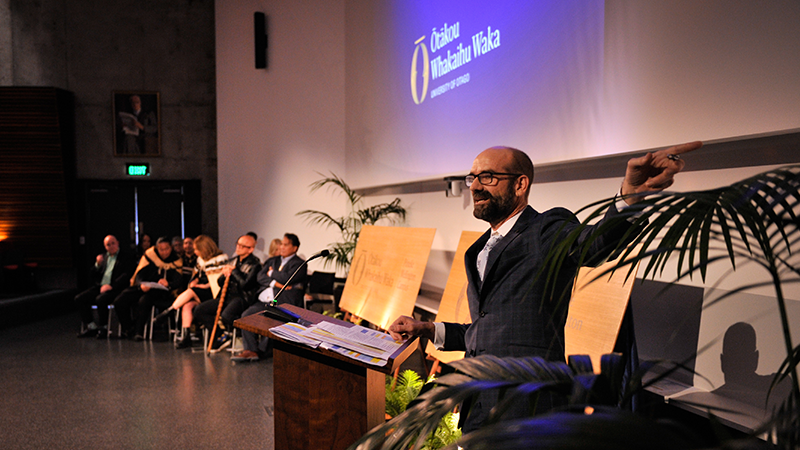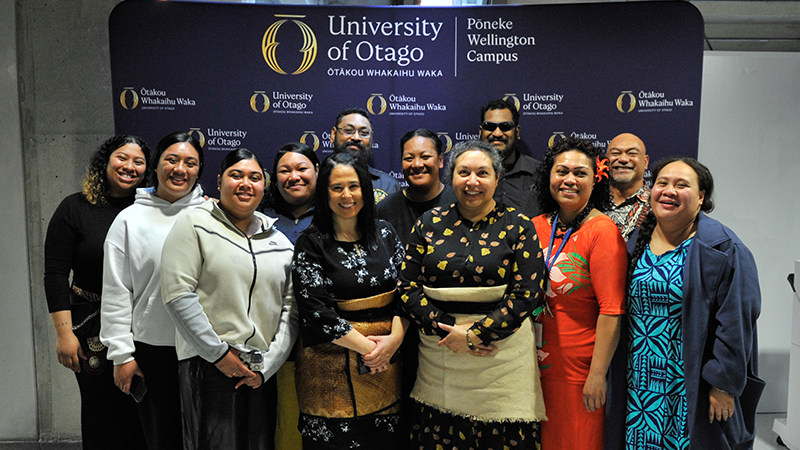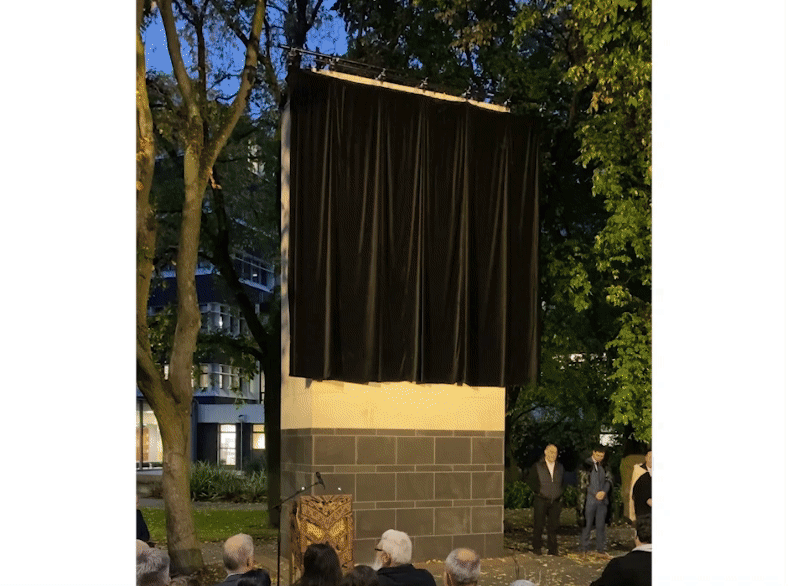
The University's new reo Māori name and tohu was unveiled at ceremonies across Ōtepoti Dunedin, Ōtautahi Christchurch and Pōneke Wellington.
Ka haea te ata
Ka hāpara te ata
Ka korokī te manu
Ka wairori te kutu
Ka horaina
He pō, he pō, he ao
Nau mai te awatea
Nau mai ki Ōtākou whenua, ki Ōtākou takata, ki Ōtākou Whakaihu Waka
Wahia te awa puta-i-tua
Ki te whenua taurikura o akitu e!
The launch of Otago’s new brand was marked with waiata, karakia, kōrero and kai across Otago’s campuses on Wednesday.
It is a bold change for Aotearoa New Zealand’s oldest university, with the introduction of a new reo Māori name and tohu (symbol), created in collaboration with mana whenua.
The name University of Otago remains but the reo name has changed to Ōtākou Whakaihu Waka – a metaphor meaning 'A Place of Many Firsts'.
The new tohu draws inspiration from Ōtākou channel, in Otago Harbour, which brings water, kai and life to and from the region – just as the University brings and shares knowledge across Aotearoa New Zealand and internationally. It emphasises the importance of relationships, reciprocity, and the transmission of knowledge between generations.
The University Council adopted the changes in July last year, following extensive stakeholder consultation.
From Wednesday, University will use the brand in all communication and marketing. The traditional crest will continue to be used in ceremonial and some other settings. A phased roll-out of signage will begin in 2025. The cost of the change is expected to be $1.3 million.
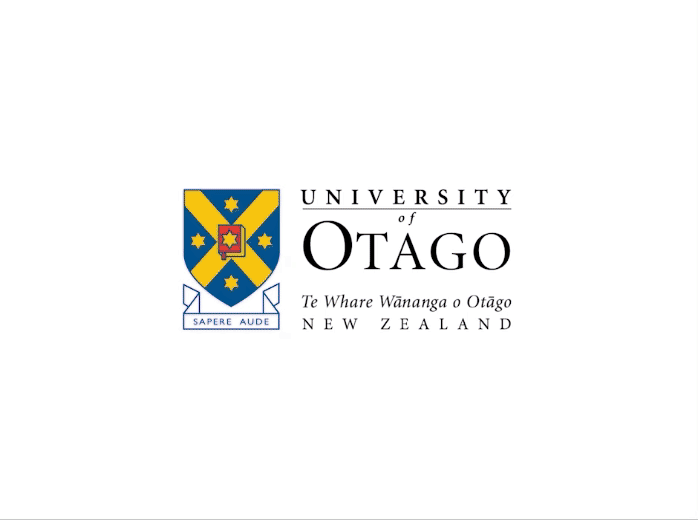
Created in collaboration with mana whenua, the University of Otago unveiled its new brand earlier this week.
Ōtepoti Dunedin
In Ōtepoti, Chancellor Stephen Higgs told the 300-strong crowd that change is a visible marker on the University’s path to become Te Tiriti-led and the path to achieving the wider objectives in Vision 2040.
“It reflects both the history of the institution, and our shared vision for the future, as outlined in our strategic document, Vision 2040.
“There is work ahead to achieve our various strategic and operational ambitions, and the new brand is a clear signal of the type of institution we want to be – world leading in teaching and research, unique, nationally and internationally connected, and supportive of all our staff and
Te Rūnanga o Ōtākou upoko Edward Ellison says the symbol is a visual reminder of the commitment made by the University to become a Te Tiriti-led University by 2040.
“This is an important day, and as mana whenua we are very pleased with the journey we have undertaken alongside the University to reach this point.
“However, this is simply the beginning of that journey and I hope both the new tohu and ikoa Māori are daily reminders for students and staff on our campuses and in the wider community.”
Ōtautahi Christchurch
In Ōtautahi, the light rain cleared , the conch shells were blown, the karanga acknowledged the significance of the event, a karakia was offered, and the 150-strong crowd gathered to see the new signage unveiled on the outside of the main campus building. A waiata tautoko then solidified the mauri of the occasion.
Staff, students and invited dignitaries were then welcomed inside with a bagpipe solo, by UOC trainee intern Louis Newman, to hear koreroreo mō te tohu (speeches about the new tohu).
Dean and Head of Campus Professor Suzanne Pitama shared the significance of the new ikoa and tohu Māori for the Ōtautahi campus, and her delight at the huge support and aroha for the re-brand amongst students and staff.
She quoted the official announcement on 26 December 1848, from the Colonial Secretary’s office that ‘In compliance with the wishes of the Scotch Association for colonising the southern portion of the Middle Island of New Zealand, His Excellency the Governor-In-Chief directs it to be notified for general information that the site of the present settlement will, in future, in official correspondence be designated Otago instead of Ōtākou’.
“That was a huge turning point in our country’s history, where the Indigenous name was overlayed by a new, colonial name and reciprocity was pushed aside,” she said.
“But here we are today on the 1 May 2024, witnessing the University of Otago, embodying the original partnership vision of Te Tiriti o Waitangi. Today we are witnessing history, we are seeing reciprocity between mana whenua and the University. We are seeing an inclusive, respectful step forward in our organisation’s path.”
She urged those gathered to be proud of the new visual identity.
“The new tohu is intended to speak to our present, is sensitive and honours our true past, and recognises the importance of history, while also navigates our path into the future.
“As eloquently spoken by mana whenua in Ōtākou of this new name and tohu: ‘Ngāi a te tō Ōtākou, kei ai ano to ngā reo. Here is the bravery, the courage of Ōtākou, we have restored our voice’.”
Former University of Otago Vice-Chancellor and campus Dean Professor David Murdoch described the Christchurch campus as a “place of many firsts”, citing examples including in 1986 when Peter Joyce becoming the youngest professor at the University of Otago, Christchurch at age 34; Andrew Hornblow becoming the first non-medically qualified Dean of a medical school in New Zealand in 1994; Christine Winterbourn being the first woman to receive the Royal Society of New Zealand’s Rutherford Medal in its 20-year history in 2001; and more recently, Professor Suzanne Pitama becoming the first Māori female Dean of any New Zealand medical school.
The event concluded with a waiata, kai and kōrero.
Pōneke Wellington
In Pōneke, Wellington Mayor Tory Whanau took centre stage to untie a blue ribbon and allow the campus’s new Māori and English signs to be unveiled.
The event, which was held with support from mana whenua partners Ngāti Toa Rangatira and Te Atiawa, was a song-filled celebration, the lecture theatre warmed by the sound of waiata and music and dance from the Pacific.
Dean and Head of Campus Professor William Levack told the almost 200 staff, students, alumni and community members present that he was personally inspired by the new ikoa and tohu.
“I think everyone who has ever worked or studied at our university can relate to this metaphor of being a place of many firsts.
“At an individual level, many of our graduates are the first in their families to go to University or the first to graduate as a health professional or as a biomedical researcher. Or they are people who took the knowledge they gained from their University experience and created something new .”
Toa Waaka (Ngāti Toa Rangatira, Te Atiawa, Ngāti Mutunga), the campus’s Rautaki Hononga Māori – Māori Strategic Framework Project Manager, spoke of the achievements of Aotearoa’s first Māori doctors, including Te Rangihīroa (Sir Peter Buck), who graduated in medicine from Otago in 1904 and was the first Māori medical graduate from a New Zealand University.
The connections to the Pacific were the focus of talks from the Associate Dean (Pacific) for the Division of Health Sciences, Associate Professor Dianne Sika-Paotonu and Associate Dean (Pacific) for the Wellington campus, Dr Ruth Toumu'a.
Three speakers shared personal stories on the theme of ‘firsts’: Emeritus Professor Dawn Elder; final-year medical student and president of Ngā Puna Hauora, Hotene Ngaropo-Tuia (Te Rarawa, Ngāpuhi), and community research partner, Cheryl Davies, from the Tu Kotahi Māori Asthma and Research Trust and Kōkiri Marae.
Professor Levack said the event was a particularly special one for Wellington as it was an opportunity to reconnect with community partners after the Nordmeyer Lecture Theatre and the Link Block on the Newtown campus had reopened after the completion of earthquake-strengthening work.
Those at the event were entertained by performances from students from the kapa haka rōpū at Te Kura Māori o Porirua and with traditional tauʻolunga dance, and music from the Wellington Tongan community.



